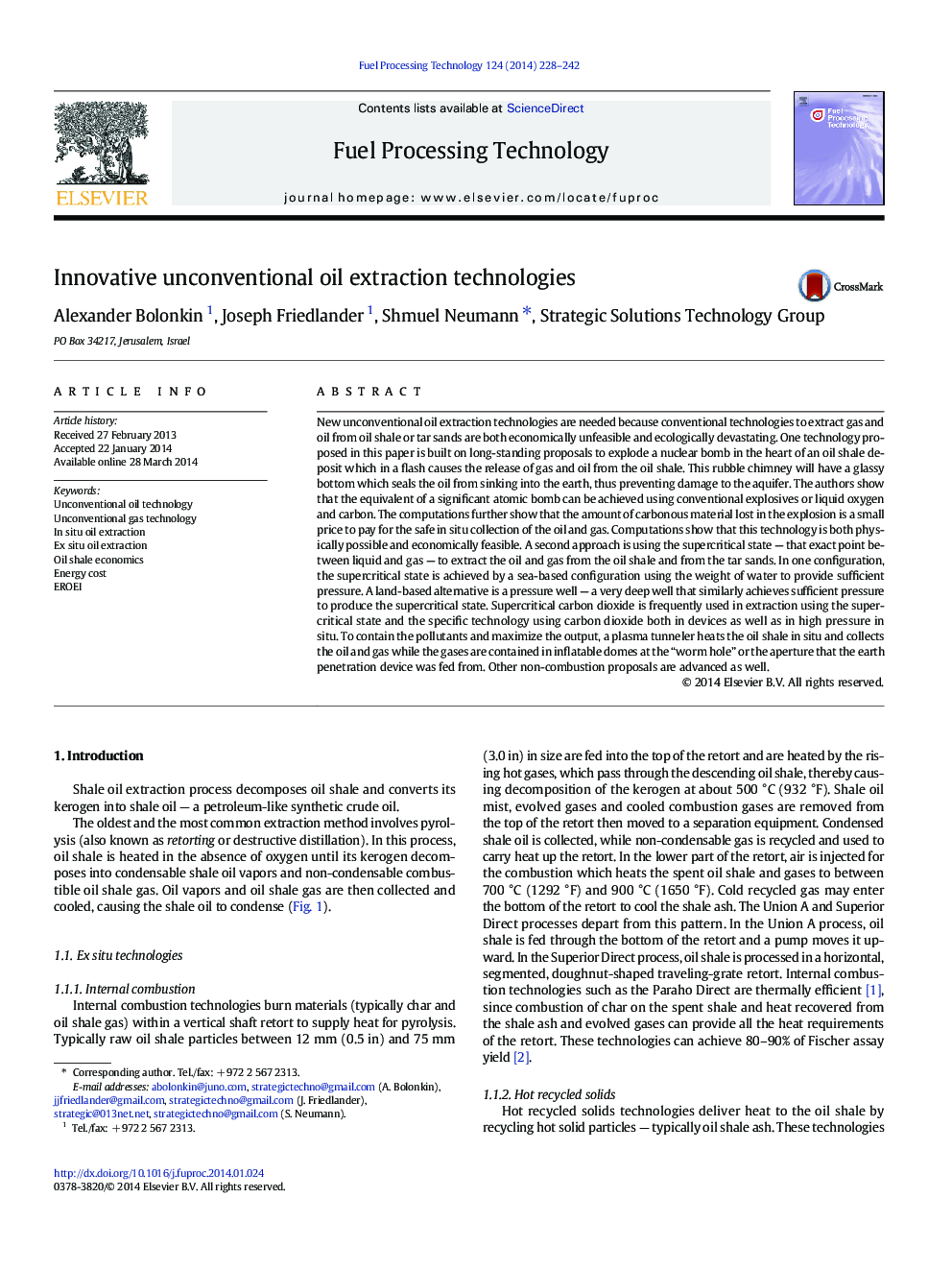| Article ID | Journal | Published Year | Pages | File Type |
|---|---|---|---|---|
| 209664 | Fuel Processing Technology | 2014 | 15 Pages |
New unconventional oil extraction technologies are needed because conventional technologies to extract gas and oil from oil shale or tar sands are both economically unfeasible and ecologically devastating. One technology proposed in this paper is built on long-standing proposals to explode a nuclear bomb in the heart of an oil shale deposit which in a flash causes the release of gas and oil from the oil shale. This rubble chimney will have a glassy bottom which seals the oil from sinking into the earth, thus preventing damage to the aquifer. The authors show that the equivalent of a significant atomic bomb can be achieved using conventional explosives or liquid oxygen and carbon. The computations further show that the amount of carbonous material lost in the explosion is a small price to pay for the safe in situ collection of the oil and gas. Computations show that this technology is both physically possible and economically feasible. A second approach is using the supercritical state — that exact point between liquid and gas — to extract the oil and gas from the oil shale and from the tar sands. In one configuration, the supercritical state is achieved by a sea-based configuration using the weight of water to provide sufficient pressure. A land-based alternative is a pressure well — a very deep well that similarly achieves sufficient pressure to produce the supercritical state. Supercritical carbon dioxide is frequently used in extraction using the supercritical state and the specific technology using carbon dioxide both in devices as well as in high pressure in situ. To contain the pollutants and maximize the output, a plasma tunneler heats the oil shale in situ and collects the oil and gas while the gases are contained in inflatable domes at the “worm hole” or the aperture that the earth penetration device was fed from. Other non-combustion proposals are advanced as well.
